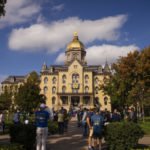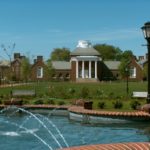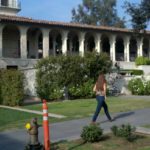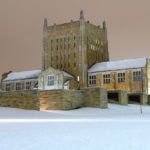6 Awesome UVA Essay Examples
UVA is a pretty selective school, so writing strong essays is essential to improving your chances. By reading former applicants’ essays and seeing what they did right and what they did wrong, you can learn how to better impress UVA admissions officers!
Please note: Looking at examples of real essays students have submitted to colleges can be very beneficial to get inspiration for your essays. You should never copy or plagiarize from these examples when writing your own essays. Colleges can tell when an essay isn’t genuine and will not view students favorably if they plagiarized.
Read our UVA essay breakdown to get a comprehensive overview of this year’s supplemental prompts.
Essay Example #1: College of Arts & Sciences
College of Arts and Sciences—What work of art, music, science, mathematics, or literature has surprised, unsettled, or challenged you, and in what way? (250 words)
Cringing when thinking about human sacrifice in “Vida y muerte en el Templo Mayor,” I puzzled over the motive behind the Aztec practice of killing a person to appease the gods of nature.
After a lengthy discussion with Mexican friends, I learned that Aztec civilization considered humans just one part of the natural world, rather than the dominant species. Only when the gods of nature are satisfied, they believed, can worldly creatures live in peace.
That’s when I recognized how I’ve been looking at the world from an anthropocentric model. Whether in the Four Heavenly Kings of Chinese mythology, or in the Bible story of Noah’s Ark my Christian grandma told, these stories revolve around humans’ survival and prosperity, and nature is just a backdrop.
The Aztec “nature-centric model,” truly challenged my perspective. Humans might not be as superior as we think; everything may not be about us. Reflecting on my motivations for advocating sustainability, I’m guilty of preserving the Earth for the sake of our human offspring, not for the Earth’s own sake.
The Aztec perception of humans’ relationship to nature inspired me to reconceptualize my own perspective. I expanded my framework from humanity to all creatures: why not consider the elephants our siblings, or the trees our cousins?
I reject the Aztec practice of human sacrifice, but their belief that we are but a tiny part of nature resonated deeply with me. Rather than protecting Earth with self-interest and fear, I now treat Earth with empathy and love.
What This Essay Did Well
This UVA essay is well-structured and well-written. It answers the prompt while providing valuable personal information about the applicant.
With the introduction, the student achieves the most important part of this essay: answering the prompt. This student identifies their topic of discussion— “Vida y muerte en el Templo Mayor,”—quickly, but keeps it interesting through using a complex sentence structure.
Rather than stating it explicitly, the author shows their desire to understand other cultures and positions themself as open-minded, as they took the time to have “lengthy discussion with Mexican friends.”
The student also relates the story back to their interests and perspectives. They share how this book caused them to reflect on the way they’d been advocating for sustainability, and view their advocacy more holistically to benefit the earth itself rather than just humans. Presumably, this student is declaring environmental studies or environmental science as a major. That means that, while readers are learning about the student’s values, they also learn that values are the central motivation behind this student’s career choices. This self-reflection is important and looks great to admissions officers!
The conclusion of the essay perfectly summarizes the growth that the student has described. It shows the self-reflection that they have experienced, with some of their beliefs staying the same and others changing.
What Could Be Improved
While overall this essay is a great example, this paragraph is its weakest link:
That’s when I recognized how I’ve been looking at the world from an anthropocentric model. Whether in the Four Heavenly Kings of Chinese mythology, or in the Bible story of Noah’s Ark my Christian grandma told, these stories revolve around humans’ survival and prosperity, and nature is just a backdrop.
That’s because this paragraph makes the error of telling, not showing. The student uses the summarizing phrase “that’s when I recognized” (which should generally be avoided) then continues to tell readers what they learned. Rather, the student could have provided a piece of dialogue from their discussion with their friend or used self-reflective questions to show us the message of this paragraph.
An example of how this paragraph could be improved:
“So you’re telling me that your culture doesn’t view humans as the main characters?” I asked my friend, still slightly baffled. When I got home, I went down a Google rabbit hole, obsessively researching Aztec beliefs. I landed on a page about the anthropocentric model. Had I been learning this model all along without even knowing? I thought about my Christian grandma’s stories—Noah’s arc, the Four Heavenly Kings, Genesis. They all revolve around humans’ survival and prosperity, and nature is just a backdrop.
This revised paragraph is much more captivating and would have strengthened the overall essay.
Essay Example #2: School of Architecture
Describe a significant experience that deepened your interest in studying in the School of Architecture. (250 words)
During my freshman year, my studio art class arranged a field trip to the National Portrait Gallery. To say I was excited was an understatement. Although I have lived near DC all my life, I never had the chance to visit its art museums. This trip would be my first time.
When we arrived, I stood in the courtyard, waiting for directions. I don’t remember what spurred me to look up, but when I did, the sight of a floating steel and glass canopy above amazed me. It was unlike anything else in the room. The undulant form of the ceiling reminded me of being underwater, looking up to see waves dancing. What struck me the most was how its sleek and modern design juxtaposed the gallery’s Greek revival architecture.
I’ve gone back several times since then, each time appreciating something new from the ceiling—in the shelter, it provides from the outside elements to the beautiful grid of shadows it leaves on the ground and walls on sunny days. Inspired by the relationship between the ceiling and the rest of the gallery, I have sought out ways to combine contrasting styles like classic vs. modern, organic vs. geometric, hard vs. soft, and fine art vs. crafts in my art. I’ve become hyper-aware of the physical spaces I occupy and their functional yet artistic characteristics. While studying architecture at UVA, I hope to continue exploring these relationships and apply them to my architectural style.
What This Essay Did Well
This essay clearly answers the prompt and provides a tangible example for readers.
From the intro, it is clear that the experience will be visiting the National Portrait Gallery.
The writer uses a simple writing style for most of the essay, but shows that this straightforwardness is not due to lack of ability or effort, but is intentionally authentic. Through the phrase “I don’t remember what spurred me to look up” the writer lets readers know that they aren’t going to tell us anything that isn’t true. This value placed on authenticity is important and tells us a lot about the student.
The student uses elaborate language to emphasize the important part of their story. The description of the ceiling—“The undulant form of the ceiling reminded me of being underwater, looking up to see waves dancing”—is interesting and engaging. It creates an image of the ceiling in the reader’s mind, but also makes the reader want to hear more!
This final paragraph ties it all together. We learn that the National Portrait Gallery’s architecture isn’t just cool, but is inspirational for this student. Additionally, through this paragraph, admissions officers learn that this student has thought out their decision to apply to UVA’s Architecture school. They are familiar with architectural styles and already think like an architect. A student who is ahead of the game and passionate about their field of study is very important to admissions officers!
What Could Be Improved
The essay could be considered unengaging at times, but there is also beauty in its simplicity that gives it an authentic feel. It lacks the bells and whistles that often accompany college essay writing and just tells the writer’s truth. While this wouldn’t be a great essay if you’re applying to creative writing, it works well for this writer and this writer’s intentions!
Still, the intro paragraph could be improved through editing the second sentence: “To say I was excited was an understatement.” Because this writer engages with a simple style (with little imagery or elaborate descriptions), they can use descriptive language strategically to emphasize certain scenes, emotions, or aspects of their story. Because they are applying to Architecture, their excitement about art is important and this excitement could have been emphasized through more elaborate language. This would also make the essay more engaging from the start and draw the reader’s attention.
Essay Example #3
We are a community of quirks, both in language and in traditions. Describe one of your quirks and why it is part of who you are. (250 words)
I haven’t let another person cut my hair in four years. Bangs, layers, a fringe, a bob, I have been my own hairdresser. With only me, a mirror, and scissors in hand, I enjoy having complete control over my appearance. Cutting my hair is liberating; it’s like removing dead weight off my shoulders. Messing up isn’t a concern, as I know my hair will grow back. I am proud of the freedom I have with my hair, but I haven’t always been this way.
In traditional Quechua culture, women have long, braided hair. One braid indicates that a woman is single, while two means she is married. Growing up surrounded by women who kept their hair long, I desperately wanted to stand out but was too afraid to break tradition. I love my Quechua heritage, but as a young girl, I thought it was silly to have braids when I wasn’t even allowed to date. Why did it matter if others knew I was single?
Eventually, my parents agreed to let me cut my hair, and for a moment I’d been looking forward to for so long, I wanted to be the one to do it. Like every time I’ve cut my hair since then, I felt like a new person. Looking back to who I was then and who I am now, I know 12 year old me would think I look cool, and she’s the only person I want to impress.
What This Essay Did Well
This essay is fun and interesting! Readers learn about the student’s personality, family history, and values. It is well-structured, engaging, and original.
For a short essay, a lot of words are given to this introduction. That being said, this introduction also provides a lot of the essay’s content. First, the student identifies their quirk—cutting their own hair. This topic is interesting and automatically makes readers think “oh, that’s cool!” but then the student takes it a step further by engaging readers with a small cliffhanger—“ I haven’t always been this way.” Cutting your own hair isn’t a quirk that inherently requires a deeper meaning, but this student draws us in by letting us know that there is one.
This essay’s second paragraph is where we get to know the student, which should always be a priority when writing any college essay. We learn about the student’s Quechua heritage and how it affected their childhood. We also learn about the student’s capacity for self-reflection, which seems to have existed from a young age—“I thought it was silly to have braids when I wasn’t even allowed to date. Why did it matter if others knew I was single?”
Finally, the last paragraph brings things full circle and draws a connection between the young girl’s confusion about Quechuan braids and the current writer’s passion for cutting their own hair. The last sentence of this essay is particularly powerful—“I know 12 year old me would think I look cool, and she’s the only person I want to impress.”
What Could Be Improved
The beginning of the final paragraph is the only part of this essay that could use some rewriting. This essay is generally well-written, so the confusing sentence structure of “Eventually, my parents agreed to let me cut my hair, and for a moment I’d been looking forward to for so long, I wanted to be the one to do it” throws off the essay’s flow. Similarly, it is difficult to parse through the sentence “Like every time I’ve cut my hair since then, I felt like a new person.”
After improving the language of these two sentences, this would be a top-notch essay! This student’s personality really shines through.
Essay Example #4
Describe an engineering feat that serves the common good and why it inspires you to study engineering. (250 words)
“I hope your kids have my curly hair,” quipped my mom. “As long as they have my eyes, I’m happy,” joked my dad. While my parents were casually bantering with me at the dinner table, I was closeted as bisexual, and my mind started to reel. Eventually, I knew I wanted to have kids, and the nuclear family I had previously envisioned began to crumble. What if I couldn’t have genetically related children with my partner?
As I grappled with this question, I discovered that biomedical engineering could provide me with an answer. Gene-editing technology CRISPR-Cas9 could allow for a same-sex couple to have genetically related children. This tool works as a precise pair of molecular scissors to cut out targeted DNA sequences in an organism’s genome. In China, researchers experimented with CRISPR and obtained live bipaternal and bimaternal mice.
CRISPR’s potential to change the world thrills me for reasons beyond my future family. With CRISPR, researchers began to cut out human DNA sequences associated with neurodegenerative diseases, blood-related disorders, and cancer. CRISPR is on the cusp of revolutionizing the medical industry, and I want to be part of innovating and discovering new uses for the technology.
Maybe one day, I’ll share a meal at the dinner table with a husband and a child who shares our features, laughing as we talk about our day. At UVA Engineering, I will acquire the tools necessary to pioneer research that could make this possibility a reality for millions of same-sex couples around the world.
What This Essay Did Well
This essay does a great job infusing a personal story into an engineering feat that inspires them. The intro opens with an anecdote, which is engaging and brings us closer to the writer by showing some vulnerability, as the student shares their thoughts and fears with us.
We learn about CRISPR in easy-to-understand terms. The writer lays out how it works, what it’s done so far, and how it could benefit society.
The final paragraph brings the essay full circle, with the student imagining their future family, made possible by CRISPR and the impact it could have for other same-sex couples.
What Could Be Improved
There honestly isn’t much that the writer could’ve done to strengthen this essay. It’s already extremely engaging, personal, well-written, and easy to understand.
Essay Example #5: College of Arts and Sciences
College of Arts and Sciences – What work of art, music, science, mathematics, literature, or other media has surprised, unsettled, or inspired you, and in what way? (250 words)
Every ten years the state and congressional district lines open up to the public; the only piece of art influenced by the fluctuating votes of human souls. The bold black lines, separating communities with luscious green lawns from those with concrete playgrounds, are redrawn redirecting millions of dollars and sparking waves of protests on state capitol steps. In its sum, the wonky headphones and salamander shapes reflect the imperfect art of gerrymandering. Within its components, the fabric is sewed with the sweat and tears of communities. From ones with family obligations rendering them unable to advocate for themselves to communities a five-minute walk from the state capitol.
In its final form, the line strokes between streets, bayous, and freeways surprise me. Instead of equal representation and distribution of power, districts group communities voting in accordance to a political party with communities who do not vote – essentially maintaining an iron grip on power. To challenge it, I have gone into non-voting communities helping register voters and have taken the time to listen to families terrified of the political process. One of my most cherished memories was meeting an elderly man who had immigrated to the U.S. and became naturalized but never registered to vote. For years, he watched his community change and never understood why he could not stop the process. Now, every time I see the district lines, I sense the unsettled doubt that within each district resides one person taken advantage of and never nurtured with civic love.
What This Essay Did Well
The subject of this essay—gerrymandering—is a surprising choice for this essay, as most people wouldn’t consider it a “work of art, music, science, mathematics, literature, or other media,” but more of a concept. Still, the author makes it work by likening the gerrymandering lines to a work of art.
The writing in this essay is very descriptive and rich with imagery, with phrases such as “luscious green lawns” and “salamander shapes.” We can clearly visualize how unusually these districts are drawn.
The author also incorporates a personal connection through their work in registering voters. We see that they care about helping others participate in the political process and exercise their civic rights/duties.
What Could Be Improved
One of the biggest weaknesses of this essay is that it spends nearly half the space describing gerrymandering, leaving not enough room to discuss how it’s impacted them personally.
The intro paragraph helps us visualize gerrymandering very well, but the wording of many sentences is confusing (some are even not grammatically correct, and it doesn’t seem that this was a conscious decision, such as this line: From ones with family obligations rendering them unable to advocate for themselves to communities a five-minute walk from the state capitol). It takes a few sentences to even realize what the topic of the essay is, and that is a critical flaw when admissions officers need to read essays quickly.
The author should’ve introduced their topic more simply, especially since gerrymandering is an unexpected subject for this essay. They could’ve also cut out several lines to focus more on the work they’ve done in their communities. The story about the immigrant man is underdeveloped and vague; the writer could’ve shared more specific details about their interaction or even included some dialogue.
The impact of this topic on the student’s identity and future goals is also unclear. Do they plan to try to work to end gerrymandering or increase access to voting? The last sentence of the essay is a missed opportunity: Now, every time I see the district lines, I sense the unsettled doubt that within each district resides one person taken advantage of and never nurtured with civic love. This line is not only difficult to understand, but ends on a sad note rather than looking towards the future with how the student hopes to make an impact.
Essay Example #6
We are a community with quirks, both in language and traditions. Describe one of your quirks and why it is part of who you are. (250 words)
I sit at a booth at California Pizza Kitchen as my legs swing back and forth, barely scraping the floor. With a mischievous grin, I grab a red crayon and scribble on the black-and-white coloring book with my own mission in mind. One times two equals two, times two equals four, times two equals eight, and so on. After I fill the page, the napkins in the dispenser in front of me become my canvas. When I finish, red numbers sprawl across the workbook and neatly ordered napkins on the table, mimicking a college professor’s chalkboard. My masterpiece is complete.
At five years old, I cherished multiplying numbers by two until I reached numbers in the millions, and my love for simple math became a staple of my personality. When I entered high school, I was delighted to discover my passion for mental math reflected in the activities I pursued:
(310 total seconds – 162 seconds ran) / 2 laps left = 74 seconds per lap. During a 1600m dash, I recalculated the average pace I needed to meet my goal after every lap and adjusted my stride accordingly. 28 rows * 36 seats per row = 1008 total seats. During a chorus class, I calculated the number of seats in the auditorium we sang in with enthusiasm.
My arithmetic may not always serve a practical purpose, yet I find comfort in making sense of the little things in my life. The math problems penned with a red crayon may seem trivial to some, but they represent my curiosity seeking a better grasp of the world around me.
What This Essay Did Well
This essay paints the student as intellectually-engaged and ambitious. We see all the different ways they incorporate mental math into their life.
The anecdote at the beginning shows us exactly what it may be like to spend time with the student in an everyday setting, which helps admissions officers visualize what the student may be like on-campus.
What Could Be Improved
While well-written, the essay falls a bit flat since the student spends almost all the allotted space describing the quirk rather than discussing what it means to them.
They also explicitly tell us the significance of their quirk by saying it “represent[s] my curiosity seeking a better grasp of the world around me.” This is redundant since they already show their curiosity through the details they reveal, such as counting the number of seats in the auditorium during chorus.
The topic of this essay may simply not be ideal since there isn’t much of an emotional backstory, unlike the third essay example where the student cuts their own hair. As you’re selecting a quirk, you should ensure that there is an opportunity for you to share your identity, emotions, and thoughts more deeply.
Where to Get Your UVA Essays Edited for Free
Do you want free, nearly-instantaneous feedback on your UVA essays? After rereading your essays countless times, it can be difficult to evaluate your writing objectively. So meet Sage, our AI tutor and advisor, who will rate your essay, give you suggestions for improvement, and summarize what admissions officers would take away from your writing. Sage can improve your chances of acceptance to your dream school by helping you show what you have to offer beyond the numbers!



